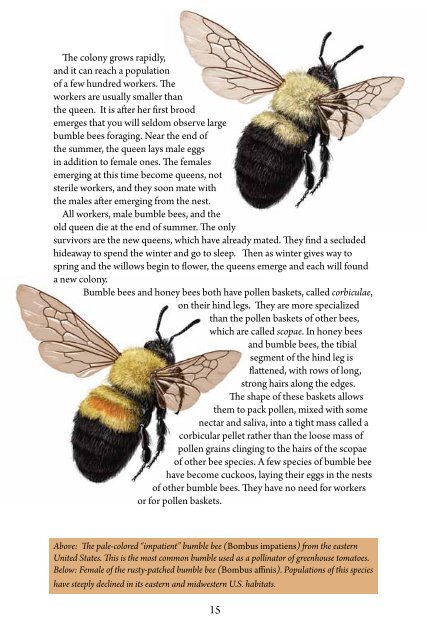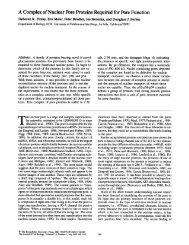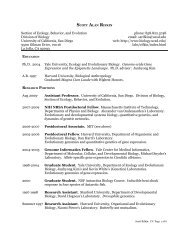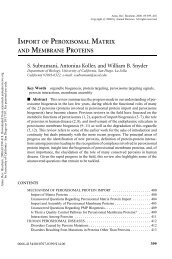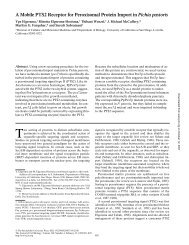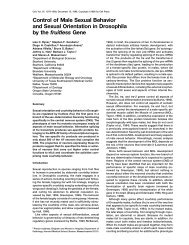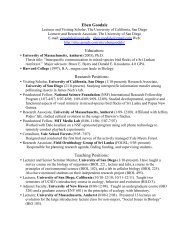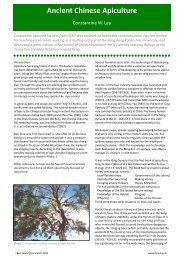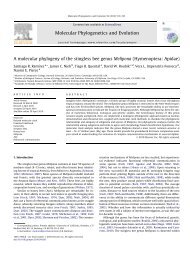Bee Basics - USDA Forest Service - US Department of Agriculture
Bee Basics - USDA Forest Service - US Department of Agriculture
Bee Basics - USDA Forest Service - US Department of Agriculture
You also want an ePaper? Increase the reach of your titles
YUMPU automatically turns print PDFs into web optimized ePapers that Google loves.
The colony grows rapidly,and it can reach a population<strong>of</strong> a few hundred workers. Theworkers are usually smaller thanthe queen. It is after her first broodemerges that you will seldom observe largebumble bees foraging. Near the end <strong>of</strong>the summer, the queen lays male eggsin addition to female ones. The femalesemerging at this time become queens, notsterile workers, and they soon mate withthe males after emerging from the nest.All workers, male bumble bees, and theold queen die at the end <strong>of</strong> summer. The onlysurvivors are the new queens, which have already mated. They find a secludedhideaway to spend the winter and go to sleep. Then as winter gives way tospring and the willows begin to flower, the queens emerge and each will founda new colony.Bumble bees and honey bees both have pollen baskets, called corbiculae,on their hind legs. They are more specializedthan the pollen baskets <strong>of</strong> other bees,which are called scopae. In honey beesand bumble bees, the tibialsegment <strong>of</strong> the hind leg isflattened, with rows <strong>of</strong> long,strong hairs along the edges.The shape <strong>of</strong> these baskets allowsthem to pack pollen, mixed with somenectar and saliva, into a tight mass called acorbicular pellet rather than the loose mass <strong>of</strong>pollen grains clinging to the hairs <strong>of</strong> the scopae<strong>of</strong> other bee species. A few species <strong>of</strong> bumble beehave become cuckoos, laying their eggs in the nests<strong>of</strong> other bumble bees. They have no need for workersor for pollen baskets.Above: The pale-colored “impatient” bumble bee (Bombus impatiens) from the easternUnited States. This is the most common bumble used as a pollinator <strong>of</strong> greenhouse tomatoes.Below: Female <strong>of</strong> the rusty-patched bumble bee (Bombus affinis). Populations <strong>of</strong> this specieshave steeply declined in its eastern and midwestern U.S. habitats.15


